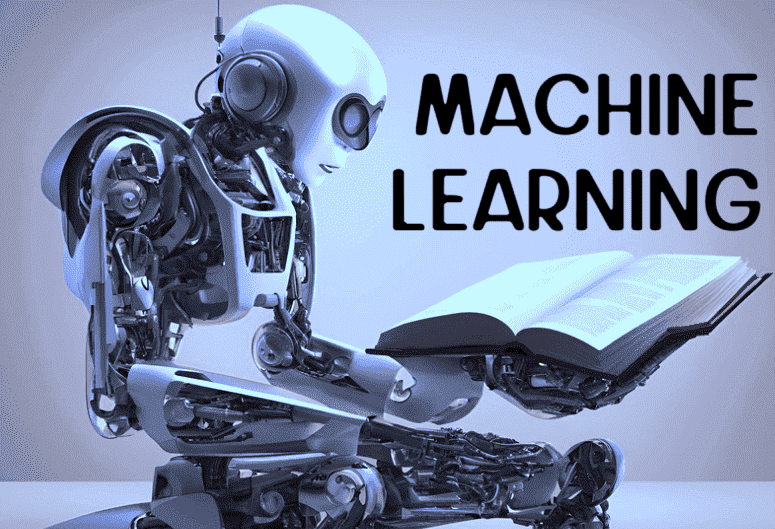
Overview:
In the world of modern commerce and service delivery, the emergence of “machine customers” represents a pivotal leap towards automated interaction and AI-driven efficiency. These entities encompass a spectrum of technologies—from AI chatbots handling customer inquiries to IoT devices autonomously managing household tasks—that redefine how businesses engage with their clientele. At its core, machine customers harness the power of artificial intelligence to autonomously execute transactions, predict consumer needs, and personalize experiences without direct human involvement. This evolution is fueled by advancements in machine learning and data analytics, enabling machines to learn from interactions, adapt to preferences, and optimize service delivery in ways that streamline operations and elevate customer satisfaction.
Furthermore, the integration of machine customers extends beyond mere automation, embodying a shift towards interconnected ecosystems where smart devices collaborate intelligently. This interconnectedness not only enhances operational efficiency but also augments service personalization through real-time data insights and predictive capabilities. As businesses continue to embrace these technologies, the implications for customer service standards, data security, and ethical considerations surrounding AI-driven decision-making become increasingly profound. This article explores the transformative potential of machine customers across industries, highlighting their role in shaping the future landscape of customer-business interactions and technological innovation.
Contents:
- What is a Machine Customer
- Evolution of Machine Customers
- Key Components of a Machine Customer
- Key Examples/Application Areas of Machine Customers Across Various Industries
- Key Benefits of Machine Customers
- Key Challenges with Machine Customers
- The Future Outlook of Machine Customers
- Summing Up
What is a Machine Customer:
A “machine customer” refers to an automated system, typically an artificial intelligence (AI) or a machine, that interacts with a business or service as a customer would. These machine customers can perform various tasks traditionally handled by human customers, such as purchasing products, requesting services, or interacting with customer service.
Evolution of Machine Customers:
1. Early Automation (Pre-2000s)
Automated Phone Systems: Basic interactive voice response (IVR) systems allowed for simple customer interactions via telephone keypad inputs.
2. Digital Interfaces (2000s)
Online Self-Service Portals: Businesses started offering web-based portals for customers to perform tasks like checking accounts and making purchases, laying the foundation for digital customer service.
3. Emergence of AI (2010s)
First Generation Chatbots: Rule-based chatbots appeared on websites, offering limited interactions and predefined responses.
Virtual Assistants: AI-driven assistants like Siri (2011), Alexa (2014), and Google Assistant (2016) brought natural language processing (NLP) and AI into mainstream consumer interactions, enabling voice-based commands and basic tasks.
4. Advanced AI and Automation (Late 2010s – Present)
Second Generation Chatbots: More sophisticated AI chatbots emerged, capable of understanding context and providing personalized responses.
Robotic Process Automation (RPA): Automation of repetitive tasks such as data entry and processing became widespread, improving efficiency in customer service operations.
Autonomous Agents: Modern machine customers can autonomously handle complex transactions and interactions across multiple platforms, integrating with APIs for seamless service delivery.
5. Future Trends (2020s and Beyond)
Predictive Analytics: Machine customers will increasingly use predictive analytics to anticipate user needs and personalize interactions.
Ethical AI: There will be a growing emphasis on ethical AI practices, including transparency, privacy, and fairness.
Enhanced Security: Advanced security measures will be crucial to safeguard user data and maintain trust.
Key Components of a Machine Customer:
1. User Interface (UI) and Interaction Layer:
Natural Language Processing (NLP): Enables the machine customer to understand and generate human language, facilitating communication with human users and other systems.
Voice Recognition and Speech Synthesis: Allows for voice interactions, making the machine customer more accessible and user-friendly.
2. Cognitive and Decision-Making Engine:
Artificial Intelligence (AI) and Machine Learning (ML): Powers the machine customer’s ability to learn from interactions, improve over time, and make informed decisions based on data analysis.
Rule-Based Systems: Implements predefined rules and logic for decision-making processes where specific outcomes are required.
3. Data Integration and Management:
Data Storage: Manages and stores data collected from interactions and transactions.
Data Analytics: Analyzes data to extract insights, identify patterns, and inform decision-making.
4. Integration with External Systems:
APIs (Application Programming Interfaces): Facilitates communication with various external services, such as payment gateways, customer databases, and e-commerce platforms.
CRM Systems (Customer Relationship Management): Integrates with CRM systems to access and update customer information.
5. Security and Privacy:
Authentication and Authorization: Ensures secure access and operations by verifying user identity and managing permissions.
Data Encryption: Protects sensitive data during transmission and storage.
6. Transaction and Payment Handling:
Payment Processing: Manages financial transactions, including payment authorization, processing, and record-keeping.
Order Management: Handles the creation, tracking, and fulfillment of orders.
7. Monitoring and Maintenance:
Performance Monitoring: Tracks the performance of the machine customer, ensuring it operates efficiently and effectively.
Error Handling and Recovery: Detects and resolves errors, maintaining smooth operation and user satisfaction.
8. Personalization and Customization:
User Profiling: Builds and maintains user profiles to offer personalized experiences and recommendations.
Customization Options: Allows users to customize their interactions and preferences.
9. Compliance and Ethics:
Regulatory Compliance: Ensures adherence to relevant laws and regulations, such as data protection and consumer rights.
Ethical Considerations: Addresses ethical concerns related to AI usage, such as fairness, transparency, and accountability.
10. Feedback and Improvement Mechanisms:
User Feedback: Collects and analyzes user feedback to continuously improve the machine customer’s performance and user experience.
Self-Learning Capabilities: Enables the machine customer to learn from past interactions and refine its processes autonomously.
Key Examples/Application Areas of Machine Customers Across Various Industries:
1. Smart Home Devices:
Smart Refrigerators: These appliances can monitor their contents and automatically reorder groceries when supplies are running low.
Smart Thermostats: Systems like Nest can interact with energy providers to manage heating and cooling, optimizing for cost and efficiency without human intervention.
2. Automated Trading Systems:
Algorithmic Trading Bots: In financial markets, these bots make trades based on pre-programmed criteria, reacting to market changes faster than human traders.
3. IoT Devices in Industry:
Predictive Maintenance Systems: Industrial machines equipped with sensors can detect when parts are wearing out and automatically order replacements, ensuring minimal downtime.
4. E-commerce Reordering Systems:
Subscription Services: Amazon’s Subscribe & Save program allows devices or systems to automatically reorder household essentials like detergent, paper towels, and personal care products at regular intervals.
5. Autonomous Vehicles:
Fleet Management Systems: Self-driving cars and trucks can schedule their own maintenance, refueling, or charging, and even navigate to service stations without human intervention.
6. Health and Wellness Devices:
Wearable Health Monitors: Devices like fitness trackers and smartwatches can order new bands or accessories when wear is detected or recommend products based on health data analysis.
7. Personal Assistants and Chatbots:
Voice Assistants: Systems like Amazon Alexa or Google Assistant can make purchases, order food, and schedule services like cleaning or repairs based on user commands or preset criteria.
Customer Service Bots: AI-driven chatbots handle customer service interactions, making inquiries, troubleshooting problems, and requesting refunds or replacements.
8. Automated Inventory Systems:
Retail Inventory Management: Systems that monitor stock levels in real-time and automatically place orders with suppliers to replenish items as they are sold.
Key Benefits of Machine Customers:
1. Increased Efficiency and Productivity:
Automation of Routine Tasks: Machine customers can handle repetitive tasks such as reordering supplies or scheduling services, freeing up human employees to focus on more complex and creative work.
24/7 Operation: Machines can operate around the clock without breaks, ensuring continuous service availability and faster response times.
2. Cost Savings:
Reduced Labor Costs: Automation reduces the need for human intervention in routine transactions, leading to significant labor cost savings.
Optimized Resource Management: Predictive maintenance and automated inventory systems help reduce waste and ensure optimal use of resources.
3. Improved Accuracy and Precision:
Error Reduction: Machines are less prone to making errors compared to humans, leading to more accurate transactions and data handling.
Data-Driven Decisions: Machine customers leverage data to make informed decisions, enhancing accuracy in tasks like inventory management and financial trading.
4. Enhanced Customer Experience:
Personalization: Machine customers can use data analytics to provide personalized recommendations and services tailored to individual preferences.
Instant Responses: Automated systems can provide immediate responses to customer inquiries, improving satisfaction and loyalty.
5. Scalability:
Handling High Volumes: Machine customers can manage large volumes of transactions and interactions simultaneously, which is particularly beneficial during peak periods.
Adaptability: Automated systems can be easily scaled up or down based on demand, offering flexibility in resource allocation.
6. Predictive Capabilities:
Forecasting and Planning: Machine customers can analyze trends and historical data to predict future needs and behaviors, aiding in better planning and resource allocation.
Preventive Maintenance: Predictive maintenance systems can foresee equipment failures and schedule timely interventions, reducing downtime and repair costs.
7. Enhanced Data Collection and Analysis:
Comprehensive Data Gathering: Machine customers collect vast amounts of data that can be analyzed for insights into customer behavior, market trends, and operational efficiencies.
Real-Time Analytics: Automated systems provide real-time data analytics, enabling businesses to make quick, informed decisions.
8. Consistency and Reliability:
Uniform Service Delivery: Machines provide consistent service quality, which helps in maintaining a uniform customer experience.
Reliability: Automated systems are reliable and can consistently perform tasks without the variability associated with human workers.
While machine customers offer many benefits, they also come with several Risks that businesses need to consider and mitigate:
1. Security Vulnerabilities:
Cyber Attacks: Machine customers can be targeted by hackers, leading to data breaches, fraud, and unauthorized transactions.
Data Privacy: The extensive data collected and used by machine customers can pose significant privacy risks if not properly secured.
2. System Failures and Downtime:
Technical Glitches: Software bugs, hardware malfunctions, or network issues can disrupt the operations of machine customers.
Reliance on Technology: Overdependence on automated systems can leave businesses vulnerable if these systems fail.
3. Ethical and Legal Concerns:
Algorithmic Bias: Automated systems may unintentionally perpetuate biases present in their training data, leading to unfair or discriminatory outcomes.
Regulatory Compliance: Ensuring that machine customers comply with complex and evolving regulations can be challenging.
4. Loss of Human Touch:
Customer Dissatisfaction: Some customers may prefer human interaction and may feel frustrated or alienated by dealing exclusively with machines.
Complex Problem Resolution: Machines may struggle to handle nuanced or complex issues that require human empathy and judgment.
5. Economic and Employment Impacts:
Job Displacement: Automation can lead to job losses, particularly in roles that are easily automated, contributing to economic and social challenges.
Skill Gaps: The shift towards automation requires a workforce with new skills, leading to potential gaps in expertise and training.
6. Quality & Integrity Management:
Data Integrity: Ensuring the accuracy and reliability of the data used and generated by machine customers is crucial, as poor data quality can lead to incorrect decisions.
Data Overload: The vast amount of data generated can be overwhelming and challenging to manage effectively.
7. Interoperability Issues:
Integration Challenges: Ensuring that machine customers can seamlessly integrate with existing systems and technologies can be complex and costly.
Vendor Dependence: Relying on specific technologies or vendors can create dependencies that are difficult to manage or change.
8. Ethical Decision-Making:
Moral Dilemmas: Machines may face situations that require ethical judgments, which they may not be equipped to handle appropriately.
Transparency and Accountability: Ensuring transparency in decision-making processes and holding machines accountable for their actions can be difficult.
9. Maintenance and Upkeep:
Ongoing Costs: Regular maintenance, updates, and monitoring of machine customers can incur significant ongoing costs.
Technology Obsolescence: Rapid technological advancements can render existing systems obsolete, requiring continual investment in upgrades.
10. Market and Competitive Risks:
Rapid Changes: The fast pace of technological change can make it challenging for businesses to keep up and stay competitive.
Disruption by Competitors: Competitors leveraging more advanced or innovative machine customer technologies can disrupt the market and erode market share.
The Future Outlook of Machine Customers:
1. Hyper-Personalization:
AI-Driven Insights: Machine customers will leverage advanced AI algorithms to provide hyper-personalized recommendations and services, tailoring every interaction to individual preferences and behaviors.
Real-Time Adaptation: Systems will continuously learn and adapt to changes in customer needs and preferences in real-time, offering highly customized experiences.
2. Seamless Integration with IoT and Smart Environments:
Connected Ecosystems: Machine customers will be integral to smart homes, cities, and industries, interacting seamlessly with a network of interconnected devices to manage and optimize resources efficiently.
Predictive Automation: IoT-enabled machine customers will predict needs and take proactive actions, such as ordering groceries before they run out or scheduling maintenance before a breakdown occurs.
3. Enhanced Emotional Intelligence:
Emotion Recognition: Future machine customers will incorporate sophisticated emotion recognition technologies, allowing them to understand and respond to human emotions, creating more empathetic and effective interactions.
Human-Like Conversations: Advances in natural language processing (NLP) and AI will enable machine customers to engage in more natural, nuanced, and human-like conversations.
4. Autonomous Decision-Making and Negotiation:
Self-Governing Systems: Machine customers will become increasingly autonomous, making complex decisions and negotiations on behalf of users or businesses without requiring human intervention.
Blockchain-Based Contracts: Smart contracts on blockchain technology will enable secure and transparent transactions and agreements between machine customers and service providers.
5. Cross-Industry Applications:
Healthcare: AI-driven health assistants will monitor patients’ health, order medications, and schedule appointments, providing continuous and proactive healthcare management.
Retail and E-Commerce: Machine customers will revolutionize the shopping experience with AI-powered personal shoppers that predict and fulfill consumer needs before they even realize them.
6. Advanced Security and Privacy Measures:
Quantum Encryption: The use of quantum computing for encryption will provide unparalleled security for data and transactions involving machine customers, ensuring privacy and protection against cyber threats.
Decentralized Data Management: Future systems will employ decentralized data management to give users greater control over their personal data while maintaining privacy and security.
7. Ethical AI and Governance:
Transparent AI: There will be a strong focus on developing transparent and explainable AI systems, ensuring that the decision-making processes of machine customers are understandable and accountable.
Regulatory Frameworks: Governments and international bodies will establish comprehensive regulatory frameworks to ensure ethical use, fairness, and compliance in the deployment of machine customers.
8. Augmented Reality (AR) and Virtual Reality (VR) Integration:
Immersive Experiences: Machine customers will utilize AR and VR to create immersive and interactive experiences, enhancing customer engagement and satisfaction in virtual environments.
Virtual Customer Assistants: AI-driven virtual assistants will operate within AR and VR spaces, guiding users through complex processes or helping them make informed decisions.
9. Sustainability and Resource Optimization:
Green AI: Machine customers will be designed with sustainability in mind, optimizing resource usage and reducing environmental impact through efficient operations.
Circular Economy: AI-driven systems will facilitate the circular economy by managing the lifecycle of products, from procurement and usage to recycling and disposal.
10. Cognitive Collaboration:
Human-Machine Synergy: Future machine customers will collaborate seamlessly with humans, augmenting their capabilities and enabling a synergistic approach to problem-solving and innovation.
Intuitive Interfaces: Advanced interfaces, including brain-computer interfaces (BCIs), will enable intuitive and direct communication between humans and machine customers, enhancing interaction efficiency.
Summing Up:
In conclusion, the advent of machine customers represents a significant evolution in how businesses engage with and serve their customers in the digital age. These intelligent systems, powered by AI and IoT technologies, not only automate routine tasks but also enhance customer experiences through personalized interactions and predictive capabilities. As businesses harness the potential of machine customers, they stand to benefit from increased efficiency, reduced operational costs, and the ability to scale services seamlessly. However, this transformation also poses challenges, including the need for robust cybersecurity measures, ethical AI governance, and ensuring that human oversight remains integral to decision-making processes.
Looking ahead, the trajectory of machine customers points towards a future where technology continues to blur the lines between human and machine interactions, offering unprecedented levels of convenience and responsiveness. As these technologies mature, it will be essential for businesses to navigate the complexities of integrating machine customers ethically and effectively, ensuring that they uphold trust, privacy, and customer-centric values. Ultimately, embracing machine customers represents not just a technological advancement but a paradigm shift in how businesses can innovate, adapt, and thrive in an increasingly digital and interconnected world.
Courtesy Images – FreePik











